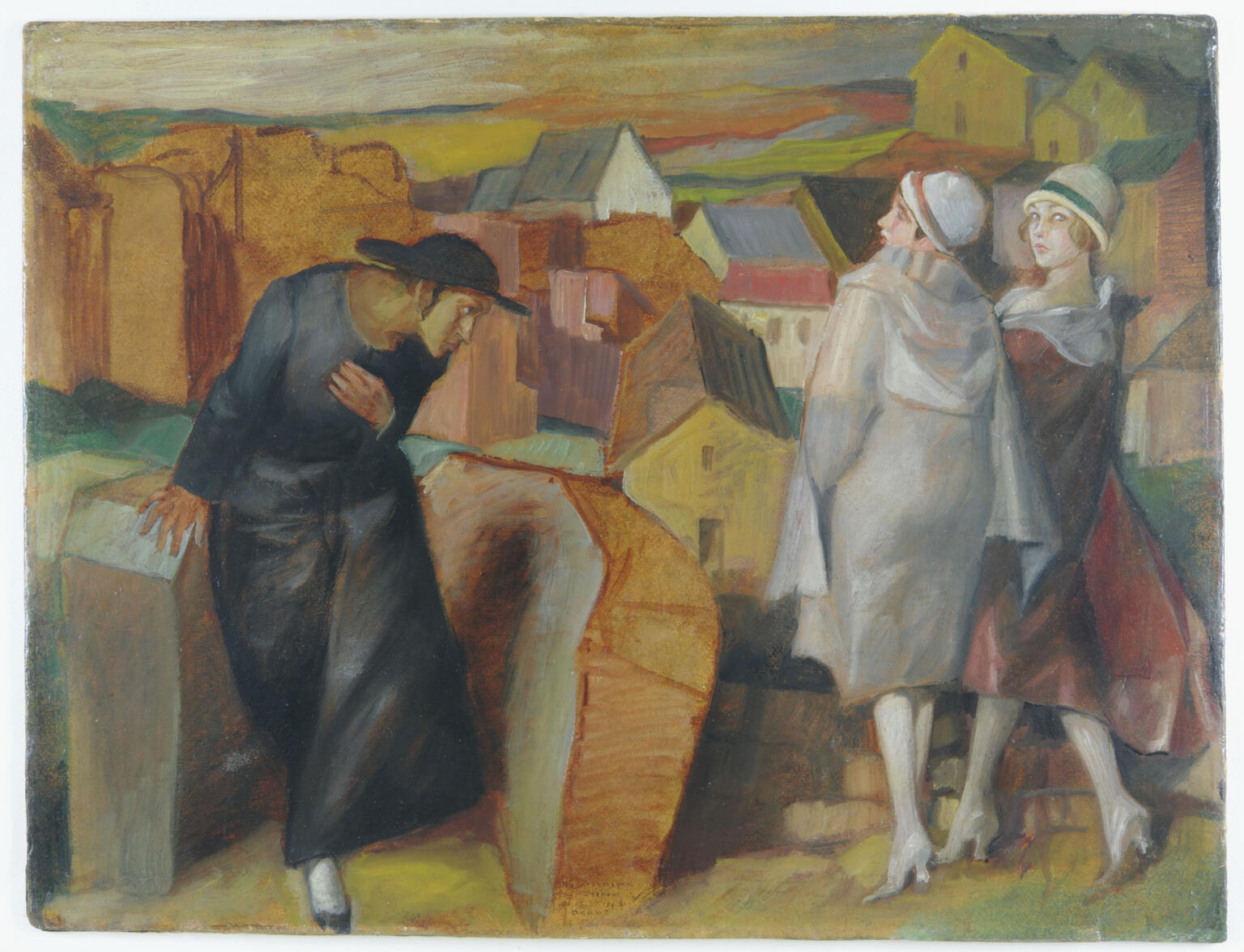The Meeting: A Jewish Youth and Two Women in an Urban Alley
Bruno Schulz
1920
The Meeting, Schulz’s only surviving oil painting, obliquely explores a theme he returned to many times in his writing and art, namely, sadomasochism, this time in the context of an encounter between different worlds: Jewish and non-Jewish, male and female. A young Hasidic man bows obsequiously as two well-dressed women pass by. Many of Schulz’s drawings depict women dominating men who are content with their subordinate roles. Around the time that he made this expressionist-style painting, he published a portfolio of drawings dedicated to the topic of sadomasochism.
Credits
Published in: The Posen Library of Jewish Culture and Civilization, vol. 8.
You may also like
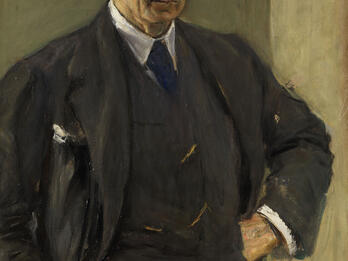
Self-Portrait
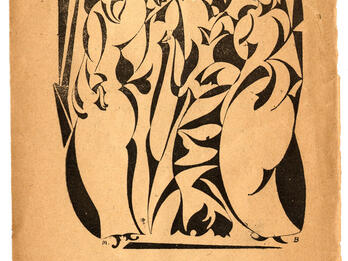
Cover, Di malke Shvo: dramatishe poeme
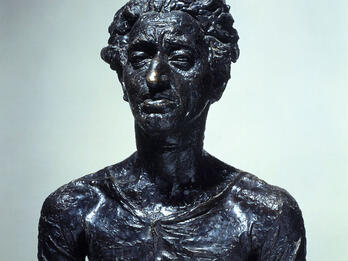
Jacob Kramer
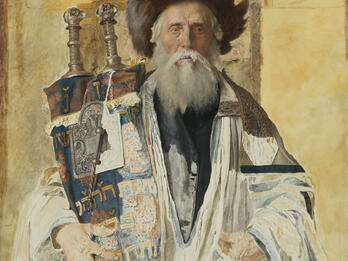
Of the High Priest’s Tribe
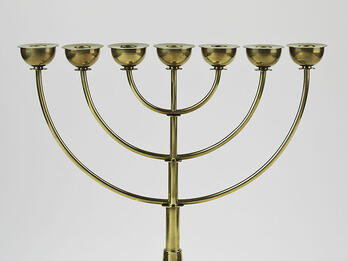
Seven-Branched Candelabrum
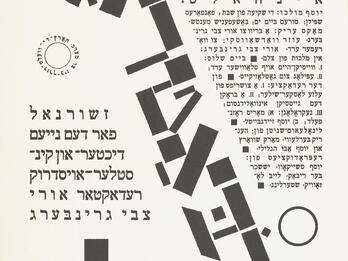
Cover of Albatros, No. 3
Creator Bio
Bruno Schulz
Born in Poland, Bruno Schulz was best known as a short-story writer and regarded as one of the great Polish-language writers of the twentieth century. He was also a gifted painter and graphic artist. While little of his artwork survived World War II, a number of remarkable pen-and-ink drawings did, including erotically charged illustrations for Leopold von Sacher-Masoch’s novella Venus in Furs (1870). Only one of his oil paintings survived the war. In 2001, wall paintings, created by Schulz while he was a prisoner of a Gestapo sergeant, were discovered in Drohobych, Ukraine. Schulz was shot to death in 1942 by another Gestapo officer who was engaged in a dispute with the sergeant.
You may also like

Self-Portrait

Cover, Di malke Shvo: dramatishe poeme

Jacob Kramer

Of the High Priest’s Tribe

Seven-Branched Candelabrum



